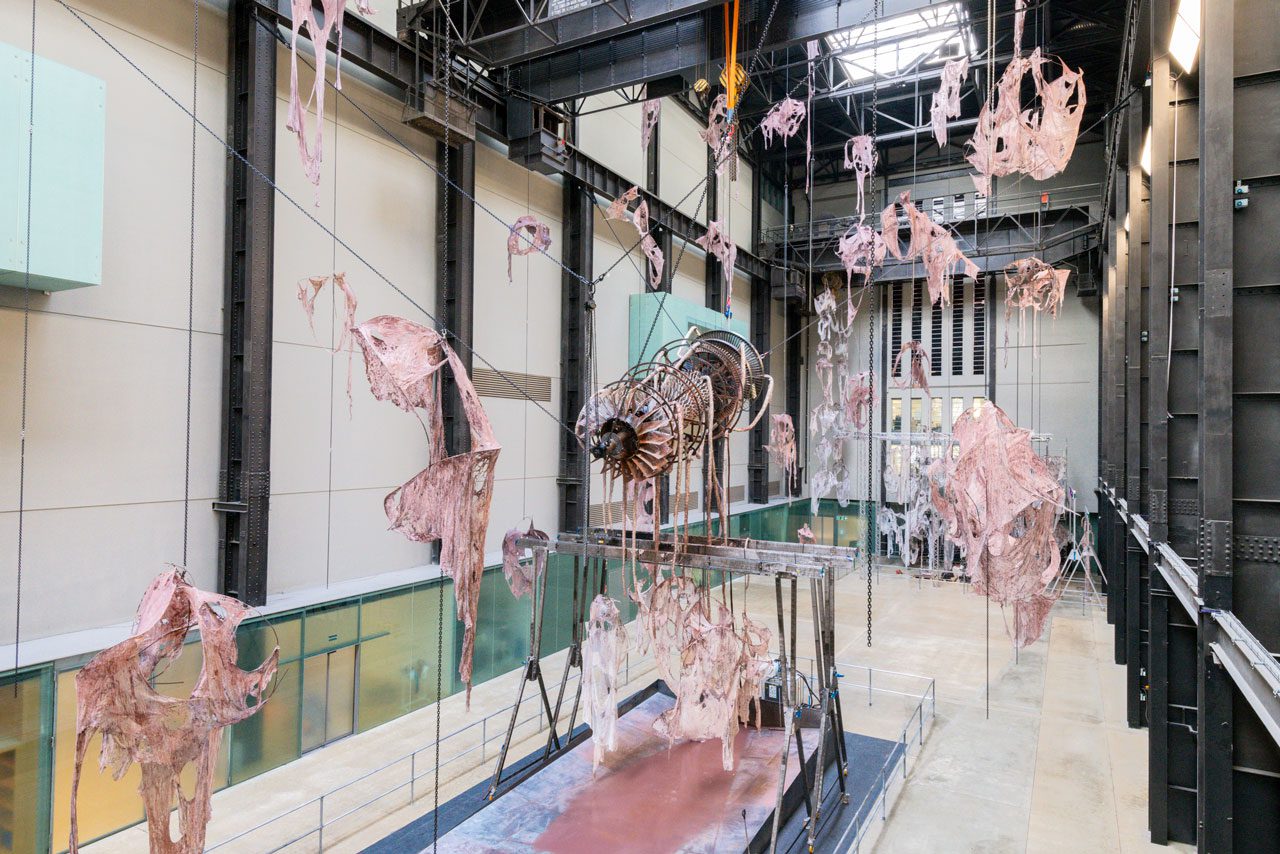PRESENTATION: Mire Lee-Open Wound
Mire Lee is known to create kinetic sculptural installations that appear shabby, ridiculous, and precarious. Lee questions human fantasies of technologies that contradict the realities of subjects that decay and deform through time. Lee’s work challenges notions of selfhood, social acceptability, and cleanliness; obliterating societal conventions of aesthetics and desire in the face of her orgasmic, transgressive and kinetic technologies. Towels, chains, clay, silicon hoses, and steel structures coalesce to form an organism that is haptic, primordial, and yet highly mechanized. Lee’s works engage the senses in a visceral way, outside the realm of intellect and language.
By Dimitris Lempesis
Photo: Tate Archive
Mire Lee’s Hyundai Commission reimagines Tate Modern as an industrial womb. Reflecting on the building’s former life as a power station, “Open Wound” presents the Turbine Hall as a living factory, finding human dreams and desires in sprawling mechanical systems. Lee populates the Turbine Hall with ‘skins’, fabric sculptures that hang from the ceiling on metal chains. At the centre of the Hall’s east end, suspended from a ceiling crane, a motorised turbine slowly spins. It discharges a viscous liquid from flesh-like silicone tentacles into a large tray. As the factory runs, new skins are wetted under the turbine, then moved by technicians to harden on nearby racks before being hauled into the air. Over time they will accumulate, ‘birthed’ from the body of the building while appearing to ‘shed’ from the ceiling above. A process of production and decay plays out, facilitated by both machinery and human hands. “Open Wound” explores thresholds and transitions: between human and machine, soft and hard, inside and outside, old and new, familiar and uncanny, individual and collective. Lee is interested in the ways that industrial-grade machinery can assume surprisingly human qualities. A motor’s internal operation might resemble that of a stomach, while the workings of a pump involve intestine-like pipes. Lee explores this tension between soft organic forms and rigid mechanical systems through her use of materials. Her kinetic sculptures resemble organisms and machines turned inside-out, inner workings of silicone tubes and low-tech motors exposed to unsettling effect. In the east end of the Hall, Lee’s convulsing turbine appears as ‘an open wound that never closes.’ Rejecting the clean, sterile feel of modern technologies, we find ourselves instead in ‘the time of decline.’ Skin is a membrane separating inside and outside, the container of our individual forms. Lee’s fabric ‘skins’ suggest dissolved or malleable bodies. Differing only in size, the suspended hangings also speak to the shared nature of our fleshy existence. Lee observes: “I’ve always been interested in skin because it’s something that registers otherness. In this commission, the skins are also about the tensions between individual and collective”. Lee believes “being moved is the strongest thing you can experience through art”. Reflecting on our current historical moment, “Open Wound” conjures “the mood of a deserted construction site”, an atmosphere of ‘futility and melancholy, where something has started to wither.’ Despite this, the collective ‘skins’ of the living factory suggest an eerie solidarity. They mutate the Hall into an intimate space of ‘dream and distant memory’, in which such feelings can be shared. Emotions are conflicting, irrational, and frequently destructive. They can also be liberating and restorative. To Lee, our everyday lives are often emotionally incoherent. She draws from the work of feminist and queer artists and thinkers such as the South Korean poet Kim Eon Hee (b.1953) to assert the transformative value of recognising our fundamental passions and vulnerabilities. Lee challenges us to embrace fear and pain alongside hope, so that we might better endure and cherish our precarious lives. “Open Wound” might evoke contradictory feelings, from tender horror to anxiety or even ambivalence. It is a theatre of a turbulent world, leaking and regurgitating. How do we come together? What can we let go?
Photo: Hyundai Commission, Mire Lee, Open Wound, Installation Photo. Photo © Tate ( Lucy Green)
Info: Curator: Alvin Li, Curator, Assistant Curator: Bilal Akkouche, Tate, Tate Modern’s Turbine Hall, Bankside, London, United Kingdom, Duration: 9/10/2024-16/3/2025, Days & Hours: Daily 10:00-18:00, www.tate.org.uk/
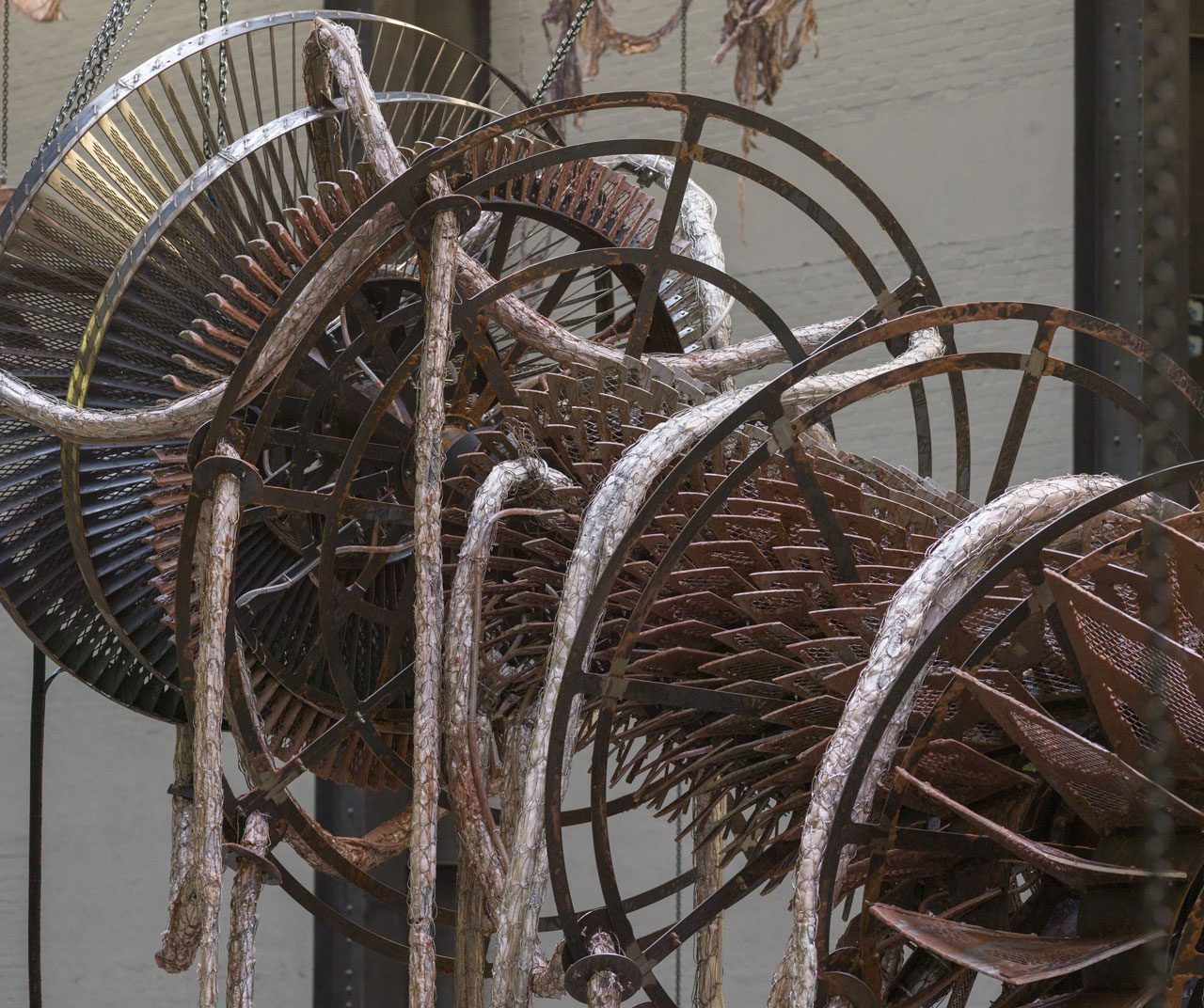
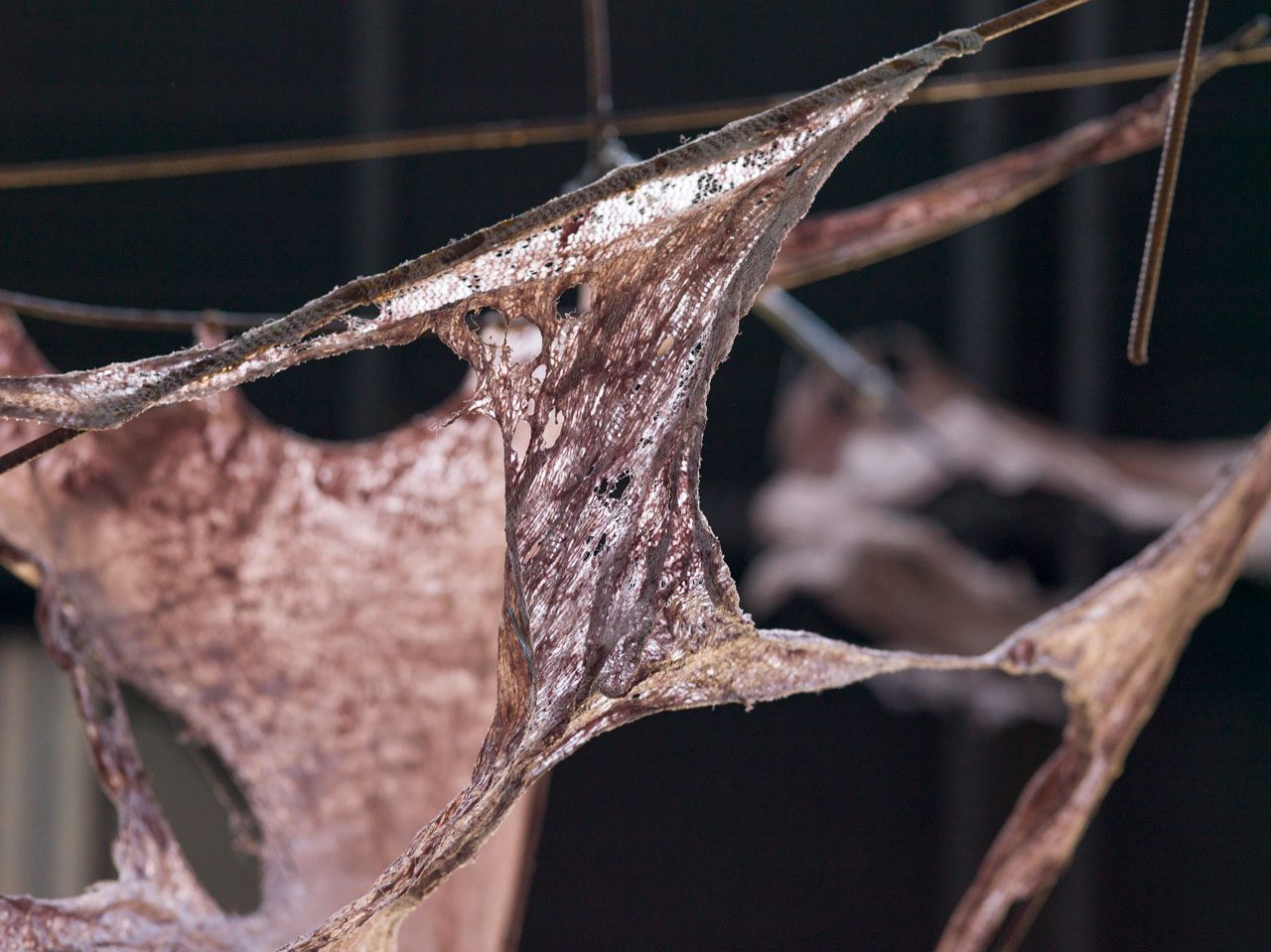
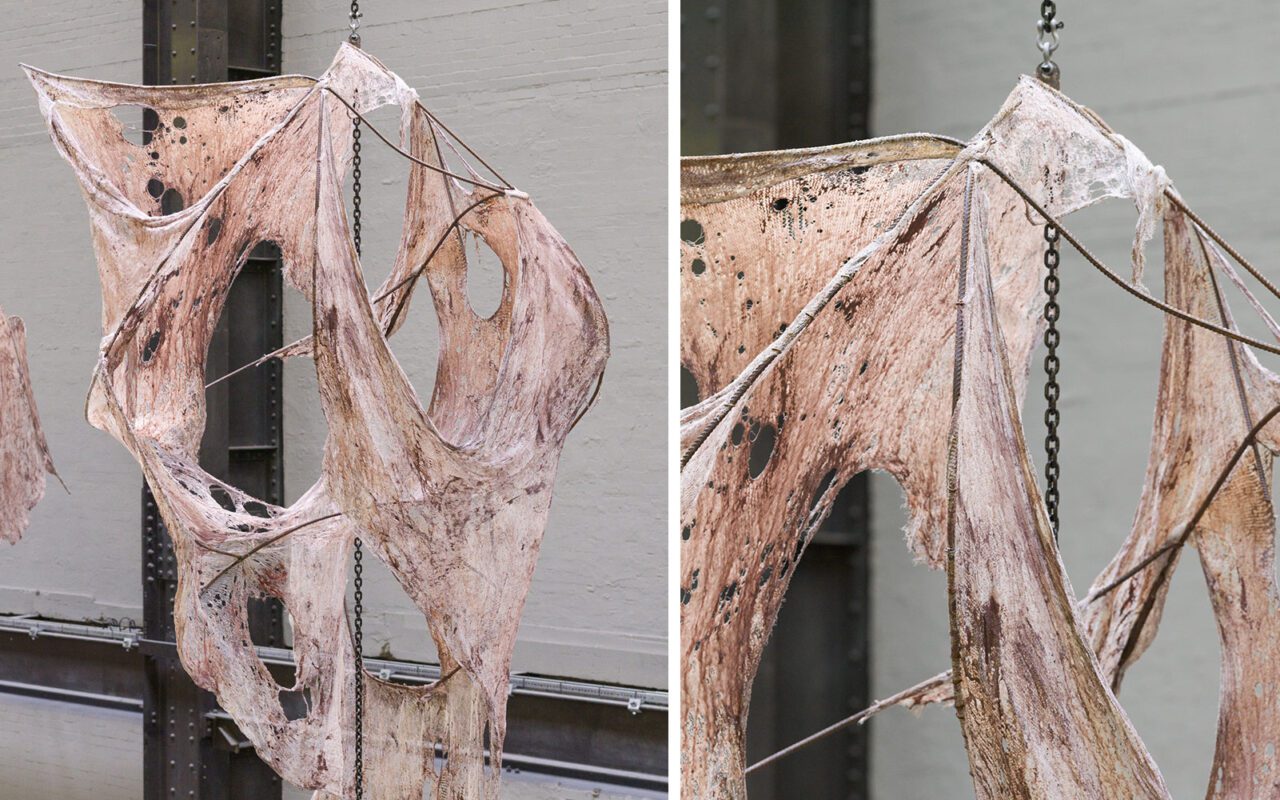
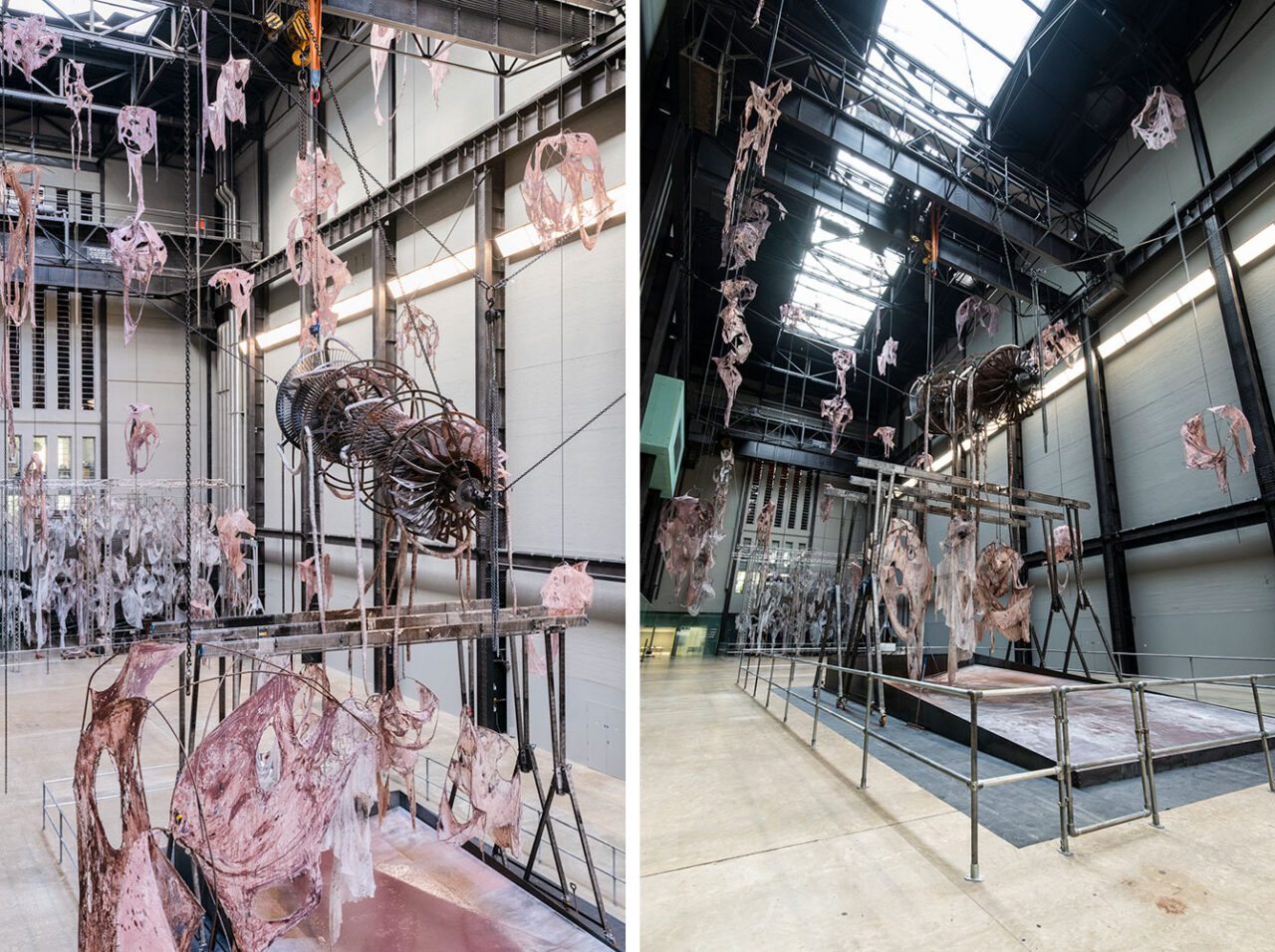
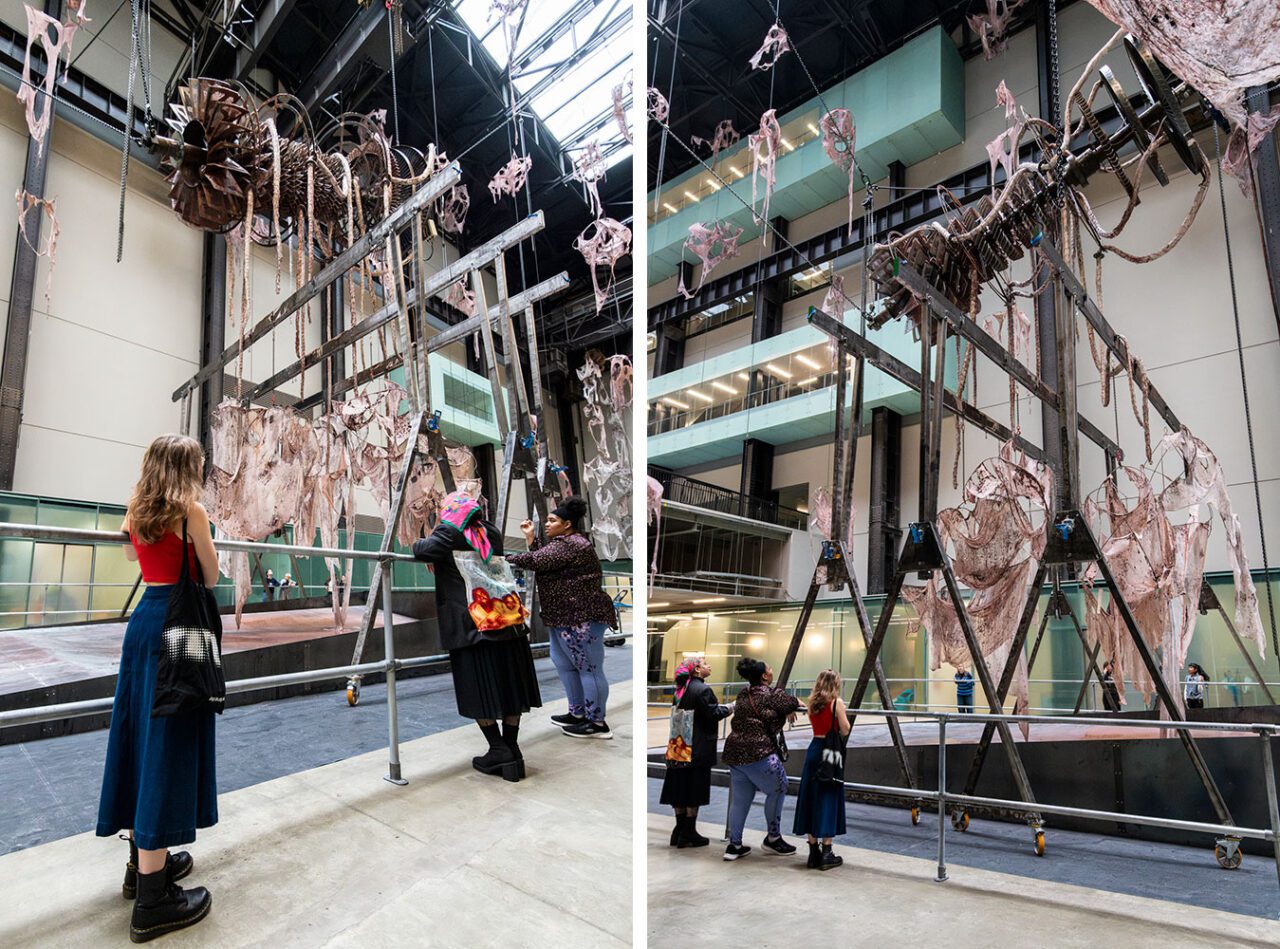
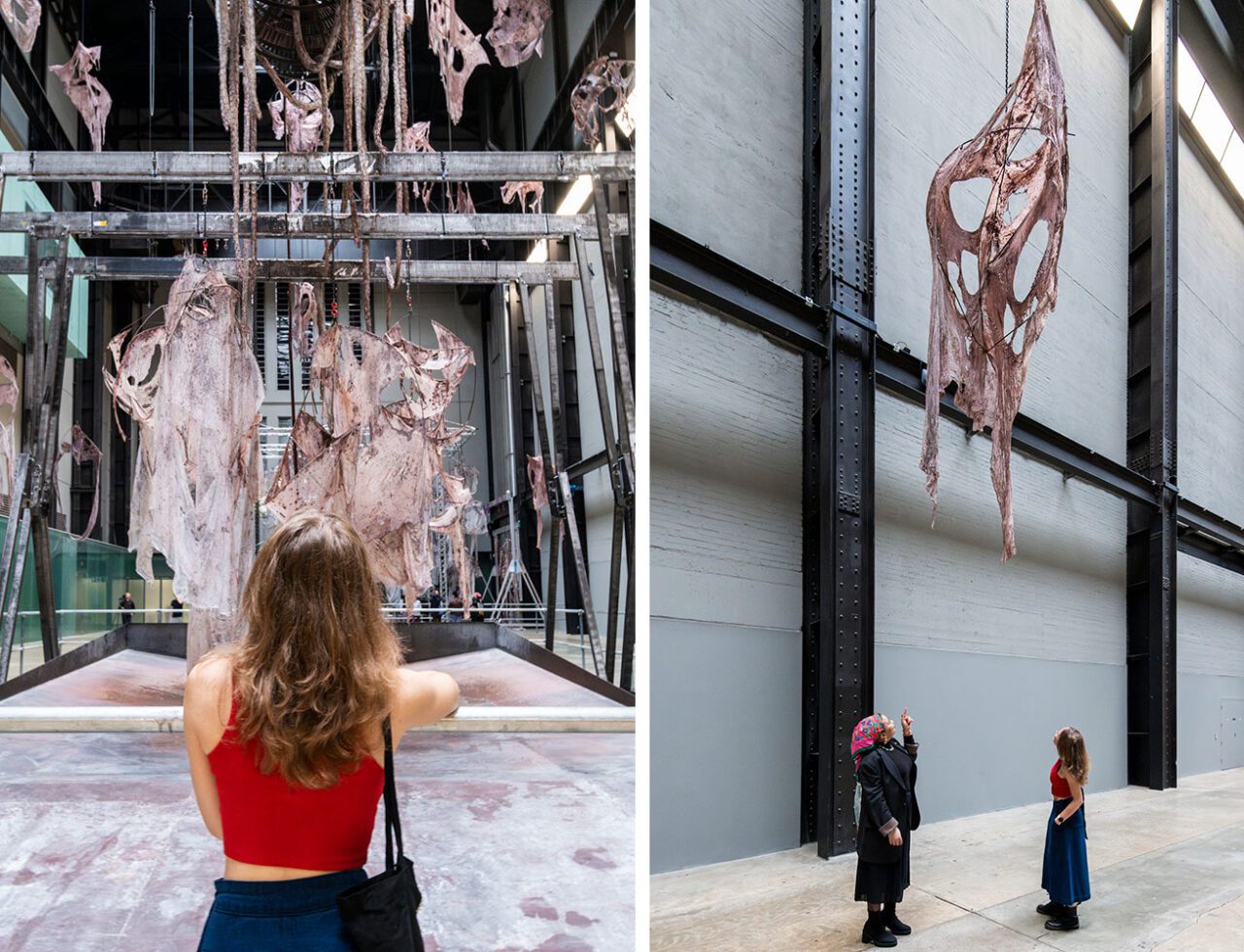
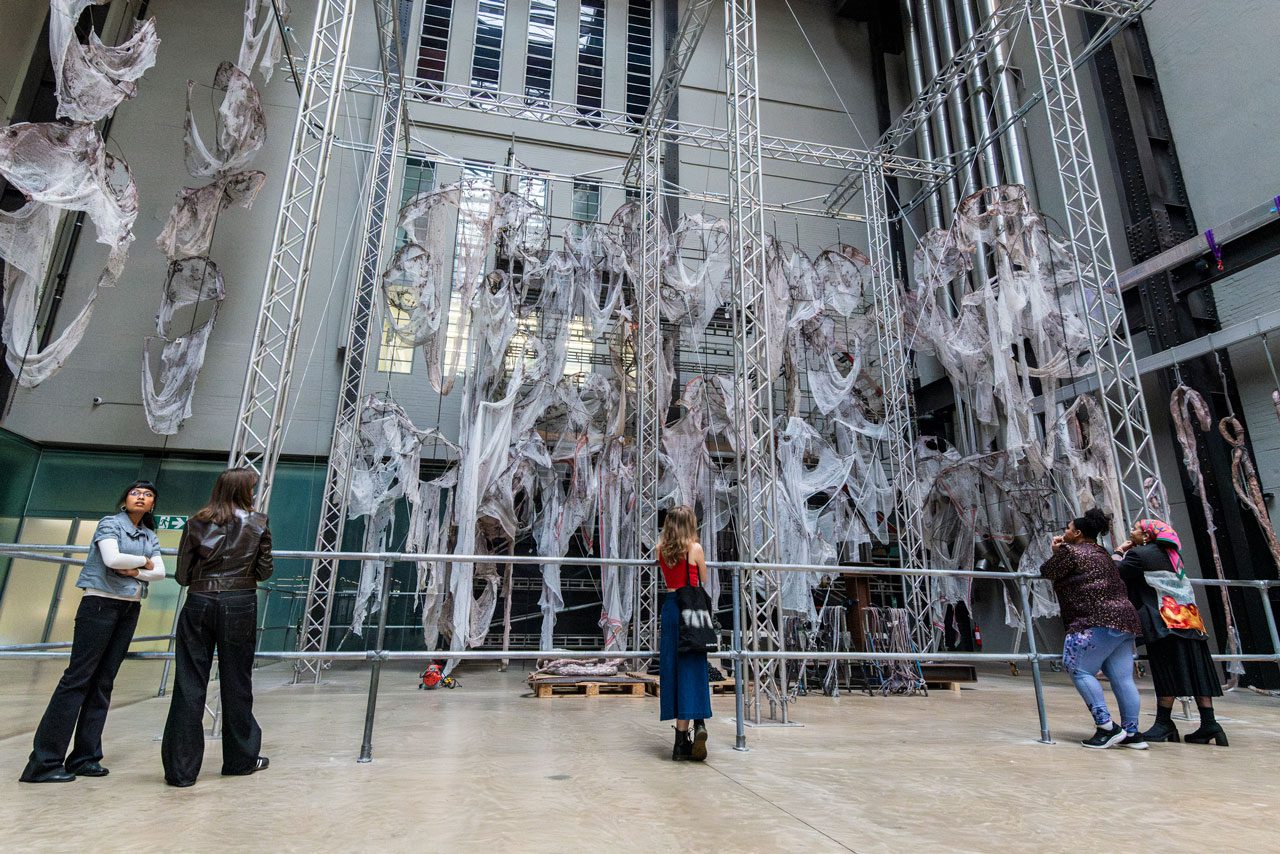
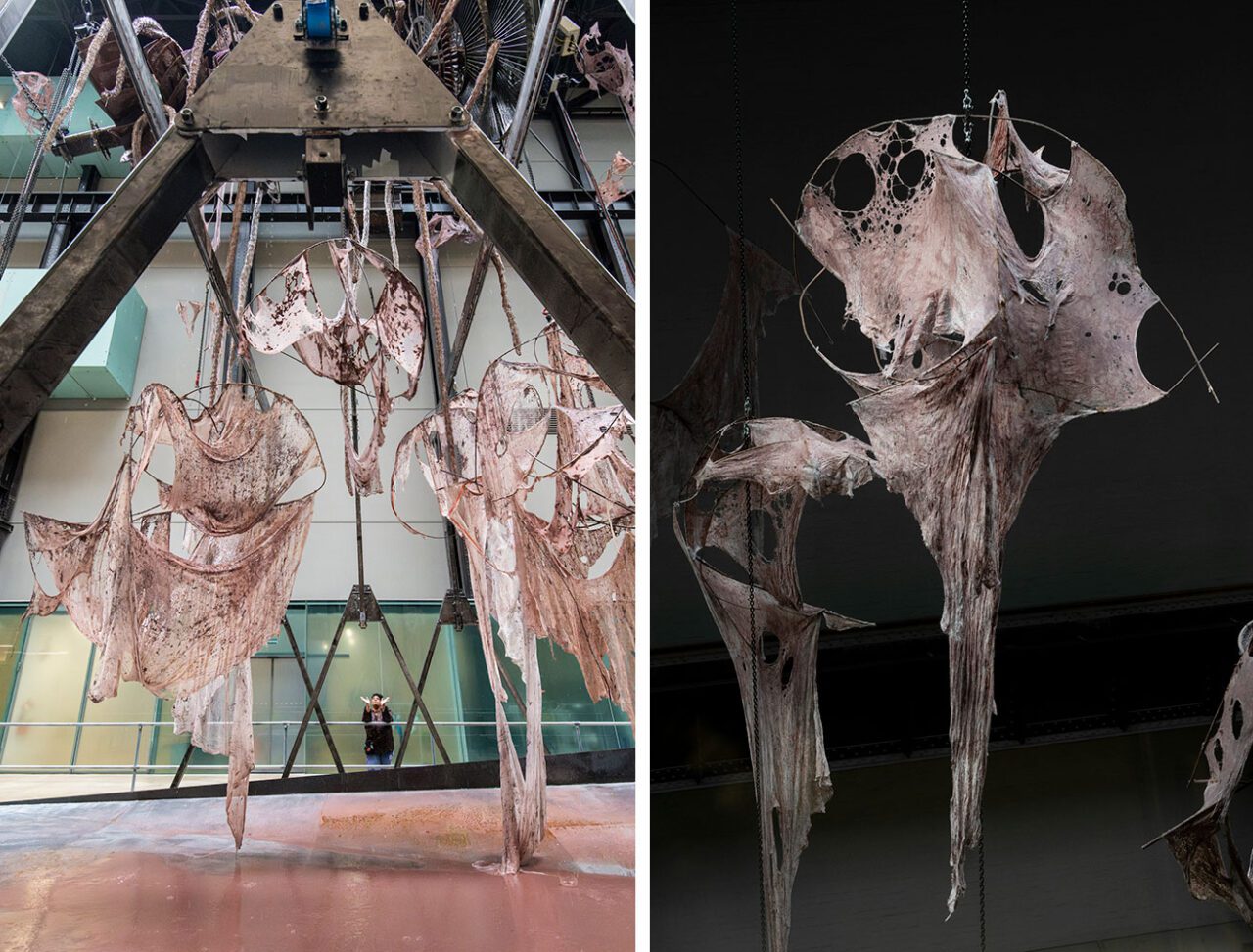
Right: Hyundai Commission, Mire Lee, Open Wound, Installation Photo. Photo © Tate (Larina Fernandes)

